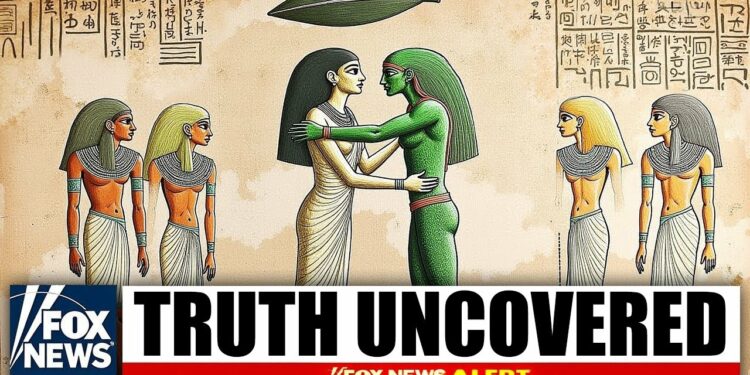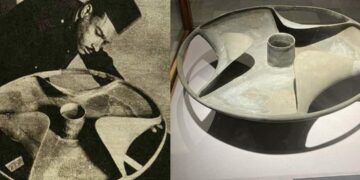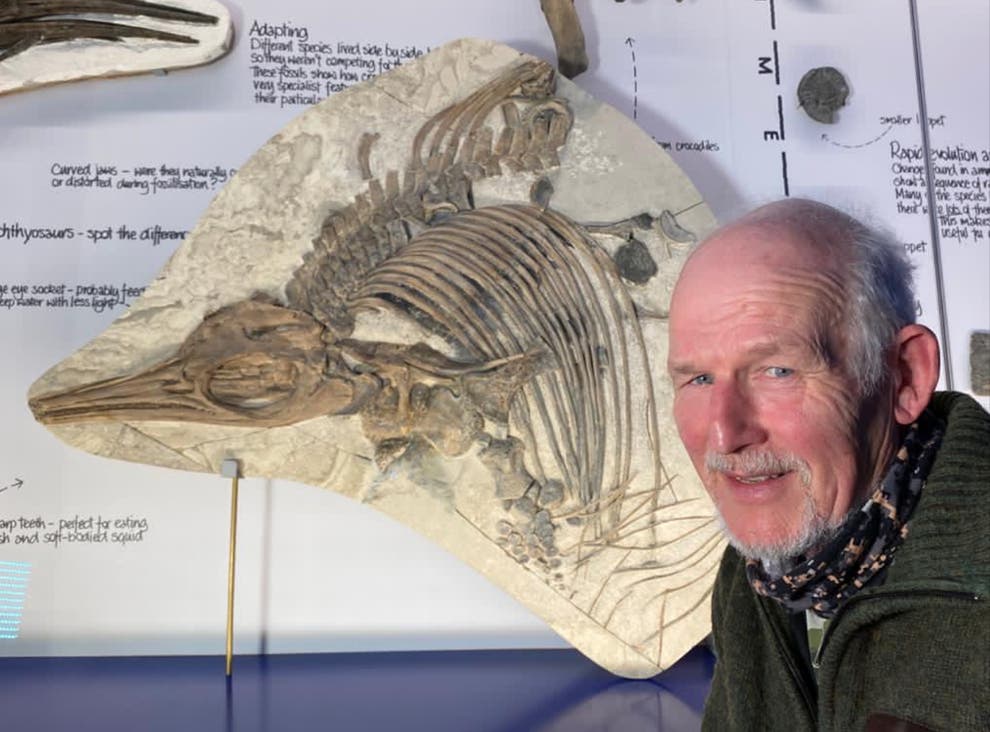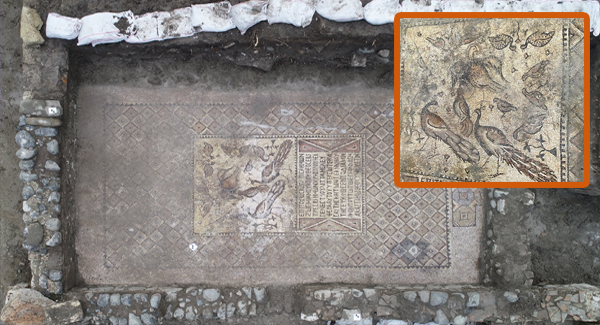Egypt has revealed a collection of newly discovered, intricately decorated ancient tombs, including two major mummification workshops uncovered at the Saqqara burial site. Among the most remarkable surviving wonders of the ancient world are the murals painted by ancient Egyptians on pyramid walls. While many depict tales of conquest and mythology, some portray far darker themes. Recently, archaeologists discovered unsettling pyramid paintings that unveil previously unknown ancient secrets. Intriguingly, no Egyptian pharaoh has ever been found inside a pyramid in Egypt. From bizarre creatures to disturbing offerings and artifacts that defy logic, the discoveries within these tombs are astonishing. The question remains: were these paintings and artifacts intended for human discovery?
Number 17: The Narmer Palette
When archaeologists excavating the Temple of Horus at Nekhen uncovered a 25-inch palette carved from green stone, they could not have anticipated its significance. The Narmer Palette quickly became a source of mystery and controversy. It features two sides: the recto side representing Upper Egypt and the verso side representing Lower Egypt. Experts believe the palette symbolizes the unification of Upper and Lower Egypt under King Narmer, depicted wearing the white crown of Upper Egypt on one side and the red crown of Lower Egypt on the other. However, other imagery raises doubts about this interpretation. The palette includes violent scenes, such as King Narmer striking an enemy with a club on the recto side and, on the verso, ten men with their severed heads placed between their legs and genitals on their necks. The identity of these men and the executed prisoner remains unknown. Additionally, the verso side depicts two large beasts with intertwined, abnormally long necks, resembling an infinity sign or the ouroboros, a symbol of order and chaos. Are these beasts a metaphor for unification, or do their snarling faces suggest something more sinister? The palette’s true meaning remains elusive, awaiting further discoveries to shed light on its mysteries.
Number 16: The Sea People and Chaos
The mortuary temple of Ramesses III is a key historical resource for understanding the turmoil of the Late Bronze Age collapse, thanks to its detailed murals. These depict epic battles, including victories by the pharaoh, but one mural stands out: the battle against the mysterious Sea People. This enigmatic enemy, arriving in ships with bird-headed prows, fought fiercely against the Egyptians. Ramesses III ultimately defeated them on land and sea, but their identity remains unknown. Records of the Sea People’s attacks appear not only in Egypt but across the eastern Mediterranean, where they contributed to the collapse of empires like the Hittites and Mycenaeans. Yet, no records reveal their origins or motives. Theories range from a coalition of small ethnic groups to speculative links with the lost city of Atlantis. The mystery persists: who were these invaders, and were they even human?
Number 15: Genie of Pashed
In the tomb of Pashed at Deir el-Medina, a mural stands out for its unusual imagery. It depicts a deceased man kneeling beside Osiris, flanked by two strange figures. One is the Eye of Horus holding two torches, while the other is a green-skinned demon with an odd physiology, holding a vase with burning torches. Such demons are common in royal tombs, but Pashed was an artisan, not royalty. Why was this royal motif used in a non-royal tomb? Some theorists suggest these demons, with their green skin and strange features, could depict extraterrestrial beings, though experts debate their true significance. These figures, seen as neutral guides representing order and chaos, remain a subject of scholarly contention.
Number 14: Hierakonpolis Tomb 100
Predating Egypt’s unification and the pharaohs, Tomb 100 in Hierakonpolis features some of the earliest narrative artwork in Egyptian history, possibly in all of Africa. Its murals, less detailed than later Egyptian art, depict a horrifying scene: a ruler in a smiting pose, holding a prisoner’s hair, with other prisoners awaiting execution. The brutality suggests either a historical event or political propaganda, but its exact meaning divides experts. This tomb highlights that even before Egypt’s rise as a kingdom, its people built tombs glorifying warfare through murals.
Number 13: The Nubian Prisoners
In the tomb of Horemheb, a general who later became pharaoh, archaeologists found a graphic mural depicting Nubian prisoners squatting with their hands tied, overseen by Horemheb wielding a weapon. This relief, alongside depictions of other groups like Asiatics and Libyans, served as military propaganda, showcasing Egypt’s dominance over its rivals. The mural underscores the hierarchical worldview of ancient Egyptians, with themselves at the apex.
Number 12: Book of Earth Torment
The tomb of Ramesses VI contains a mural from the Book of Gates, depicting brutal afterlife punishments akin to Dante’s Inferno. Bound figures are shown upside down, dismembered, or cast into fiery pits, with serpents spewing flames. These scenes, placed low on the walls, emphasize the debasement of the wicked in the afterlife, offering a chilling glimpse into ancient Egyptian beliefs about divine retribution.
Number 11: Taweret
Taweret, a chaos deity with a hippopotamus body, lion paws, and crocodile tail, was a fearsome yet protective figure in Egyptian mythology. Depicted in tombs and on sarcophagi, she guarded souls during rebirth, reflecting her role as the goddess of childbirth. Her pregnant form symbolized maternal protection, inspired by the fierce instincts of Nile hippopotamuses. Despite her terrifying appearance, Taweret’s role was positive in Egyptian culture.
Number 10: The Sand Dwellers of Beni Hassan
The tombs of Beni Hassan feature murals depicting foreign travelers bearing gifts, with a notable example in the tomb of Khnumhotep II, labeled the Asiatic Procession. This mural shows 37 foreigners, led by a figure named Absha, offering tributes like incense and animals. Their origins and significance remain unknown, appearing in multiple tombs without clear indications of their homeland. Theories suggest they highlight Egypt’s centrality in ancient trade and alliances, but their true identity remains a mystery.
Number 9: Dendera Light Bulb Reliefs
In the Hathor Temple at Dendera, a relief resembling a modern light bulb—complete with a filament-like snake, a lotus base, and an egg-shaped shell—sparked controversy. Found in a restricted area, it led to theories of alien technology or time travel. Experts, however, argue it depicts an Egyptian creation myth, with the snake symbolizing Horus and the shell representing a womb. Despite this, many reject the official explanation, insisting it portrays advanced technology.
Number 8: Abydos Helicopter Hieroglyphs
At the Temple of Seti I in Abydos, hieroglyphs appear to depict a helicopter, spaceship, and submarine, fueling theories of ancient advanced technology or alien influence. Experts attribute these shapes to erosion, where Ramesses II’s name was carved over Seti I’s, blending the glyphs over time. However, the striking resemblance to modern vehicles remains a point of fascination and debate.
Number 7: Astronomical Ceiling of Senmut
The tomb of Senmut features one of the oldest star maps, revealing the ancient Egyptians’ advanced astronomical knowledge. Divided into 24 sections representing the hours of the day, it includes Jupiter, Saturn, Mercury, Venus, the sun, lunar cycles, and the Big Dipper, depicted as deities. This mural reshaped perceptions of Egyptian scientific prowess, showing their ability to study and record celestial phenomena with precision.
Number 6: Book of the Dead
In Saqqara’s necropolis, archaeologists found a well-preserved Book of the Dead belonging to a man named Amos. This guide for navigating the underworld included spells, navigation instructions, and a declaration of innocence, with intricate sketches of Amos worshiping Osiris and the heart-weighing ceremony. While Amos was likely an elite, his exact identity remains unclear, but the scroll offers valuable insights into Egyptian burial practices.
Number 5: Hyksos Era Burial Pits
In a Hyksos-era palace from the 15th century, archaeologists uncovered three pits containing 18 severed right hands, precisely cut as part of a ritual. Likely trophies presented by soldiers to their ruler, these hands reflect the violent practices of ancient warfare, buried near the throne room as a testament to military triumphs.
Number 4: Sabu Disc
Found in a First Dynasty tomb, the Sabu Disc, a stone object resembling a wheel or propeller, has sparked speculation about its purpose. Its aerodynamic design and central placement in the tomb suggest significance, with theories ranging from an oil lamp to a flying saucer model. Its advanced craftsmanship for its time fuels debates about possible extraterrestrial influence.
Number 3: Mystery Shafts
Archaeologist Curado Malanga’s radar scans revealed eight massive vertical shafts beneath the Giza pyramids, some extending 2,000 feet with potential staircases and chambers. These findings suggest possible underground cities, though skeptics question Malanga’s methods. The discovery’s implications could redefine our understanding of the pyramids.
Number 2: Swallower of Sinners
Ammit, the “Devourer of Sins,” a deity with a crocodile head, lion upper body, and hippo hindquarters, was depicted in tombs and Books of the Dead. If a deceased person’s heart weighed heavier than a feather, Ammit would consume it, embodying the Egyptians’ fearsome vision of divine judgment.
Number 1: Cave of Swimmers
The Cave of Swimmers, dating to 8000 BC in a then-lush Sahara, contains ancient paintings of humans appearing to swim or float in the air, alongside giraffes and hippopotamuses. These surreal figures, possibly representing souls or extraterrestrial beings, resemble later Egyptian art in the Book of Gates. Their meaning remains one of the oldest and most perplexing mysteries in ancient art.
What are your thoughts on these discoveries? Share them below, and stay curious!























